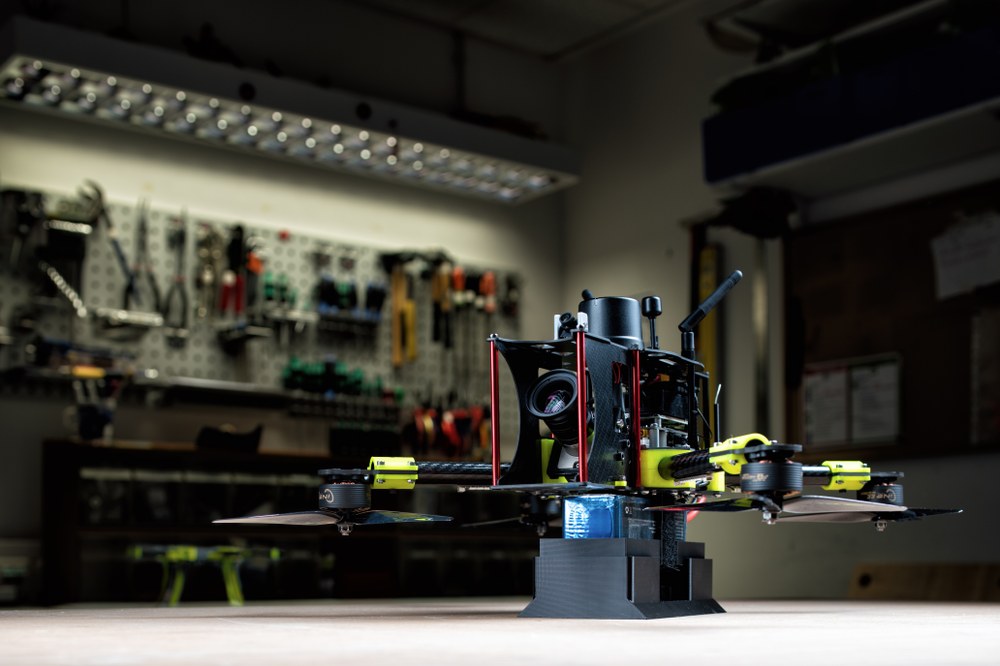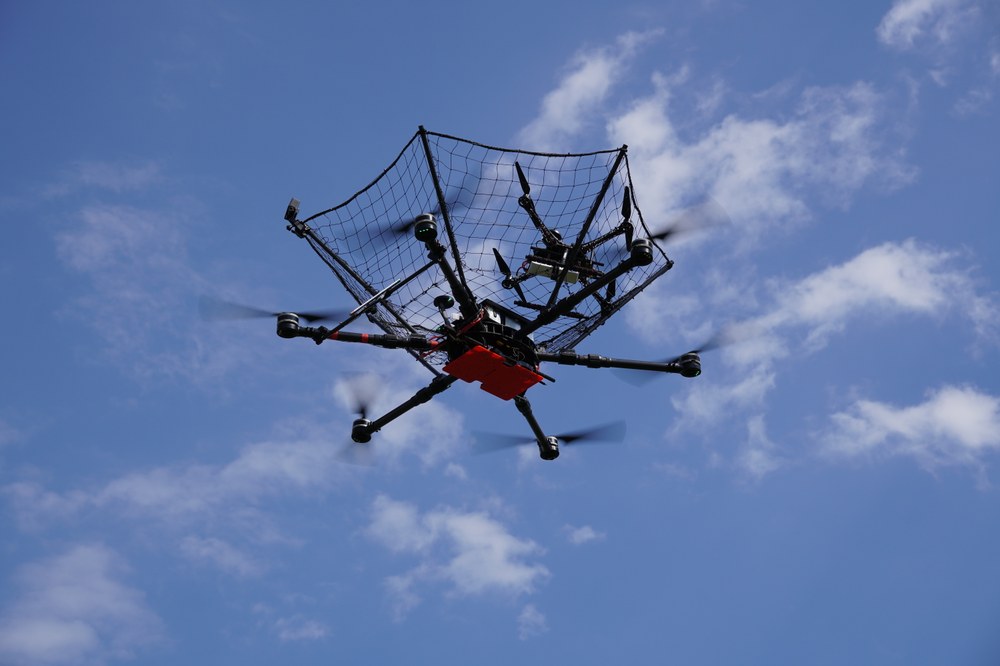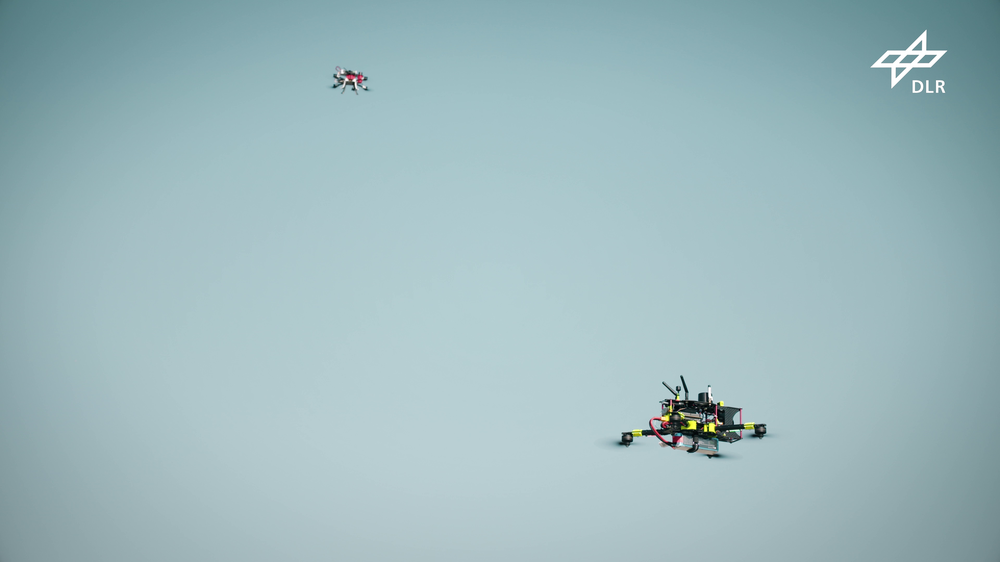Drone defence
With the increasing proliferation of drones in leisure, industry, and logistics, the potential for their misuse is also growing. At large events, in security-sensitive areas such as airports, or near critical infrastructure, unauthorised drone flights can pose significant risks. Existing countermeasures such as broadband jamming, electromagnetic interference, or shooting are often unsuitable in civilian environments, as they can cause collateral damage or pose risks to uninvolved persons.
Our developments therefore focus on modern technologies for the reliable detection and neutralisation of individual drones and drone swarms. The emphasis is on the integration of our own interceptor and capture drones, which can precisely identify and track intruder drones. In critical situations, a controlled crash is either induced through ramming manoeuvres or innovative gripping systems are used to capture and transport the intruder away without endangering the surrounding area.
Our development approach is based on several key pillars:
The design and construction of high-performance prototypes enables us to test new technologies and algorithms in realistic environments in a timely manner. These interceptor drone prototypes are characterised by high speed, exceptional agility, and durability.
The reliable detection and identification of unauthorised drones requires a combination of ground- and airborne sensor systems. The technologies we use include: radar systems for precise localization, optical sensors and infrared cameras for visual and thermal signatures, and AI-powered algorithms that detect patterns and clearly distinguish drones from other objects.
Innovative algorithms for trajectory planning and flight control ensure that the defence systems can make optimal use of their high flight speeds and manoeuvrability. The goal is to intercept intruding drones efficiently and reliably.
Our research focuses on two core concepts: safe neutralisation and removal. When a controlled crash is deemed safe for the surrounding area, our systems deploy targeted measures to force the drone to land or abandon its mission. If a crash cannot be safely executed, advanced gripping mechanisms are used to capture and safely transport the drone away.
The continuous development of our drone defence system makes a significant contribution to the protection of critical infrastructure, large-scale events, and conflict scenarios. Our goal is to develop and evaluate innovative, practical solutions that are robust and can be used independently of the specific scenario.



